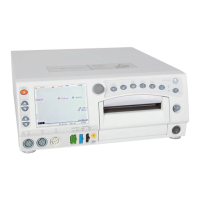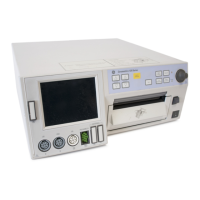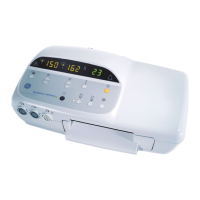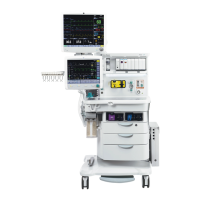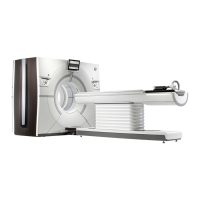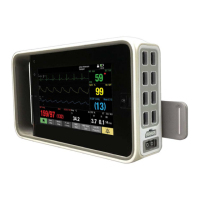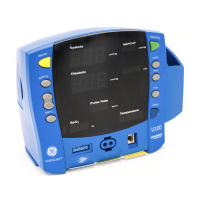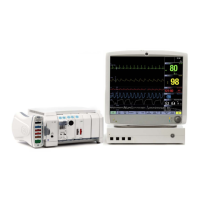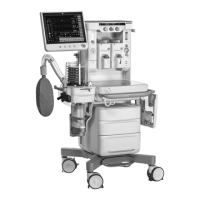9-6 250cx Series Maternal/Fetal Monitor Revision C
2036946-001
Maternal Pulse Oximetry Monitoring: MSpO2 Technology
Because a measurement of SpO
2
is dependent upon light from the OxiMax sensor,
excessive ambient light can interfere with this measurement.
Select an appropriate OxiMax sensor, apply it as directed, and observe all warnings
and cautions presented in the directions for use accompanying the OxiMax sensor.
Clean and remove any substances such as nail polish from the application site.
Periodically check to ensure that the OxiMax sensor remains properly positioned on
the patient.
High ambient light sources such as surgical lights (especially those with a xenon
light source), bilirubin lamps, fluorescent lights, infrared heating lamps, and direct
sunlight can interfere with the performance of an SpO
2
OxiMax sensor. To prevent
interference from ambient light, ensure that the OxiMax sensor is properly applied,
and cover the OxiMax sensor site with opaque material.
WARNING
Failure to cover the OxiMax sensor site with opaque material in
high ambient light conditions may result in inaccurate
measurements.
The Nellcor Technology determines SpO
2
by passing red and infrared light into an
arteriolar bed and measuring changes in light absorption during the pulsatile cycle.
Red and infrared low-voltage light-emitting diodes (LED) in the oximetry OxiMax
sensor serve as light sources; a photo diode serves as the photodetector.
To identify the oxygen saturation of arterial hemoglobin, the monitor uses the
pulsatile nature of arterial flow. During systole, a new pulse of arterial blood enters
the vascular bed, and blood volume and light absorption increase. During diastole,
blood volume and light absorption reach their lowest point. The pulse oximeter
bases its SpO
2
measurements on the difference between maximum and minimum
absorption (measurements at systole and diastole). By doing so, it focuses on light
absorption by pulsatile arterial blood, eliminating the effects of nonpulsatile
absorbers such as tissue, bone, and venous blood.
Automatic Calibration
Because light absorption by hemoglobin is wavelength dependent and because the
mean wavelength of LEDs varies, an oximeter must know the mean wavelength of
the OxiMax sensor's red LED to accurately measure SpO
2
.
During monitoring, the software selects coefficients that are appropriate for the
wavelength of that individual OxiMax sensor's red LED; these coefficients are then
used to determine SpO
2
. Additionally, to compensate for differences in tissue
thickness, the light intensity of the OxiMax sensor's LEDs is adjusted automatically.
SatSeconds™
False or nuisance alarms are a common concern in pulse oximetry monitoring. They
are often triggered by minor brief desaturation events that are clinically
insignificant. SatSeconds is a proprietary Nellcor alarm management technique that
helps reduce false and nuisance alarms without risking patient safety.

